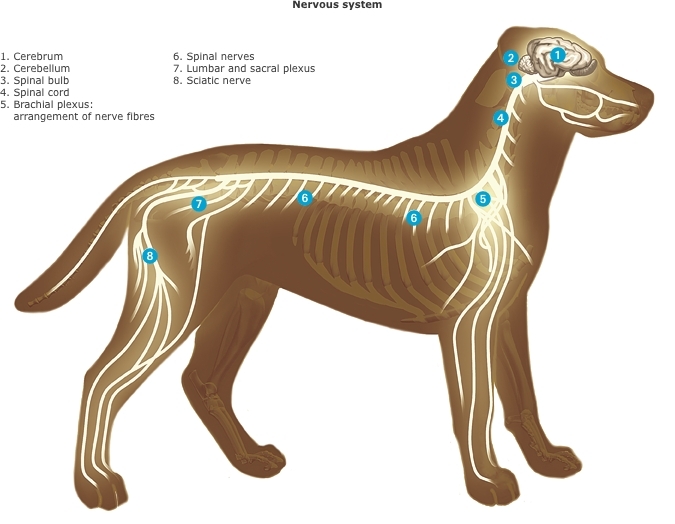Laurie's Blogs.
Feb 2019
Newsworthy Neuro Updates

Today’s blog is inspired by a two journal articles that crossed my desk recently. While unrelated, they both fit into the category of Neuro and may be useful in enhancing your knowledge or clinical decision making! Let’s dive in!
von Pfeil DJF, Zellner E, Fritz MC et al. Congenital laryngeal paralysis in Alaskan Huskies: 25 cases (2009–2014). J Am Vet Med Assoc. 2018, 253(8): 1057-1065.
In this study, they looked at 25 Alaskan Huskies with congenital laryngeal paralysis (CLP). They identified that severely affected dogs were profoundly dyspneic at birth or collapsed after brief exercise. Other, less affected dogs, reportedly tired easily or overheated with minimal exercise. These clinical signs showed up at 6.4 months on average.
There was a correlation with CLP and blue eyes (92%), white facial markings (76%), and oral mucosal tags or tissue bands (52%). There was a mononeuropahty of the recurrent laryngeal nerve. Dogs that underwent unilateral cricoartenoid lateralization resulted in substantial clinical improvement (including the ability to compete in sled dog races. Non-surgical management yielded less improvement and an inability to compete in sled dog races.
The results suggest an autosomal recessive mode of CLP inheritance (upon evaluation of pedigree). The authors stated: “Given the apparent genetic component to CLP in this breed, we recommend that dogs with these features be prevented from breeding.”
Wow!
Okay, now the second study.
Hodshon AW, Thomas WB. Transient depression of pelvic limb reflexes in dogs with acute focal thoracolumbar myelopathy. J Am Vet Med Assoc. 2018, 253(8): 1022-1031.
In this prospective study, the researchers looked at 34 dogs with pelvic limb paralysis due to ANNPE, FCE, or IVDH between the T3-L3 region. Two examiners classified dogs as affected or unaffected in regards to having depressed or absent pelvic limb withdrawal reflexes. Those affected (9 in total) were evaluated every 12 hours until return to normal and again at 4 – 8 weeks in some dogs.
Patellar reflexes were depressed in 2 of 9 affected dogs. The median time required for withdrawal reflexes to return to normal was 60 hours (range, 12 to 156 hours).
Results indicated that dogs with focal thoracolumbar spinal cord lesions, especially those with peracute onset of paralysis, can develop transient depression of pelvic limb reflexes. Awareness of this phenomenon is important for veterinarians to accurately localize lesions and develop appropriate diagnostic plans and prognoses.
So, here, if you are assessing paralyzed dogs shortly after onset of injury, you need to know that their reflexes may not be typical of upper motor neuron signs. So, keep this in mind, and look at the whole picture. As well, it highlights the importance or retesting the neuro dog throughout his/her recovery!
There you go! Now you’re a little bit smarter in the Neuro department!
Have a great week!
Cheers,
Laurie


